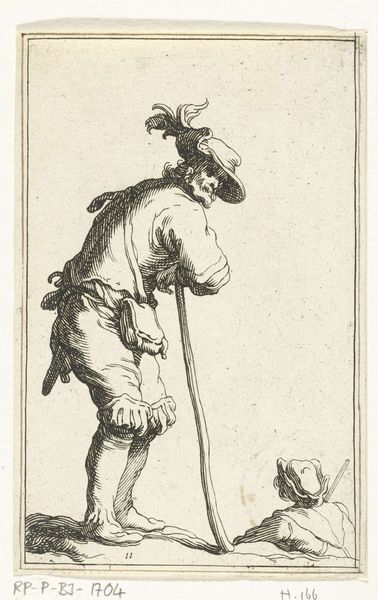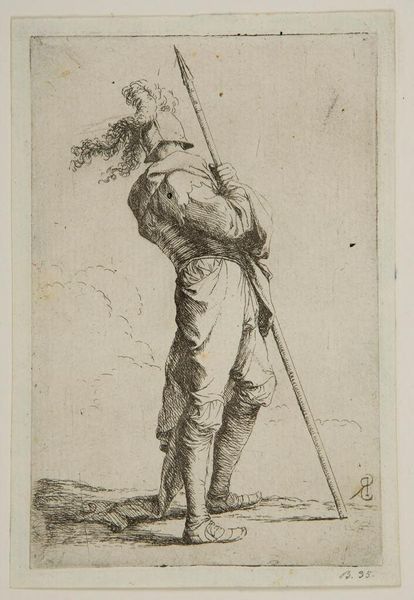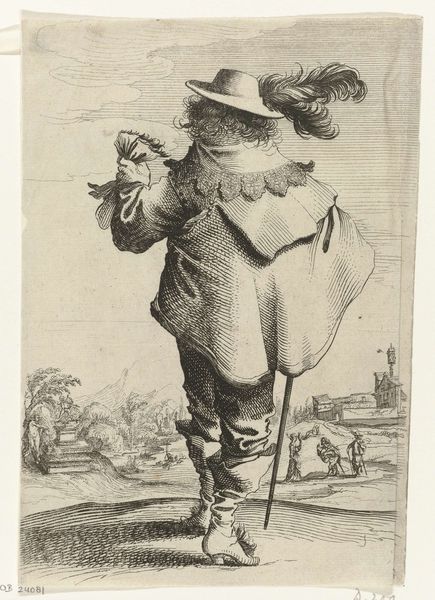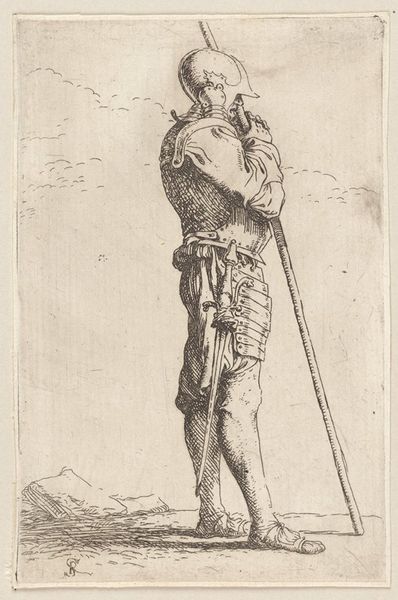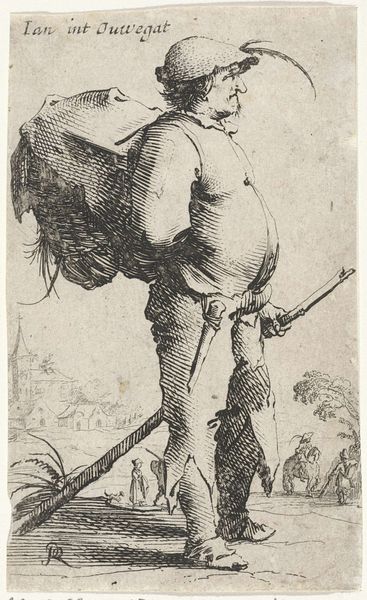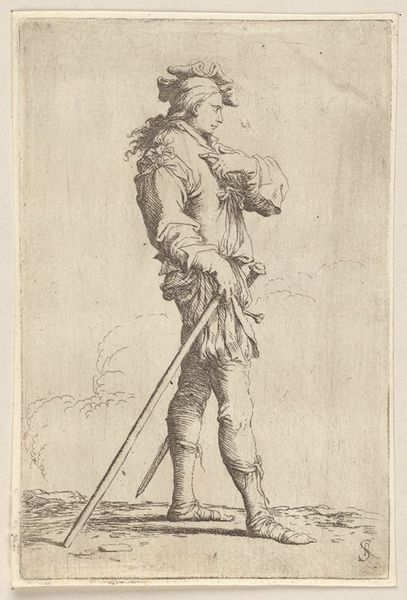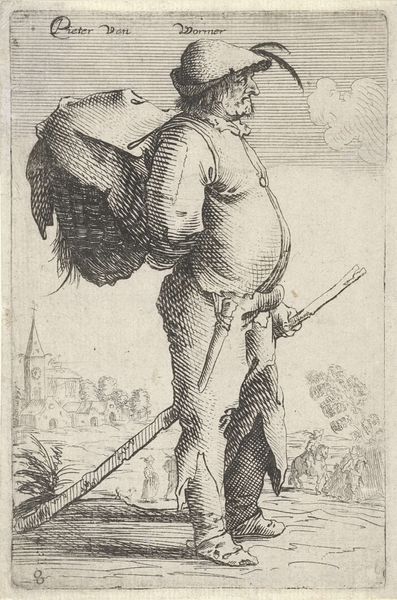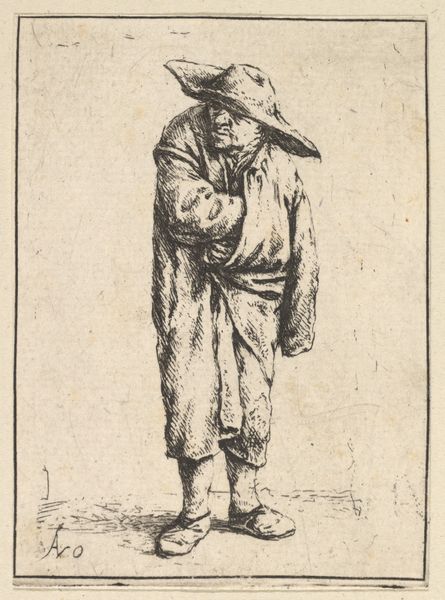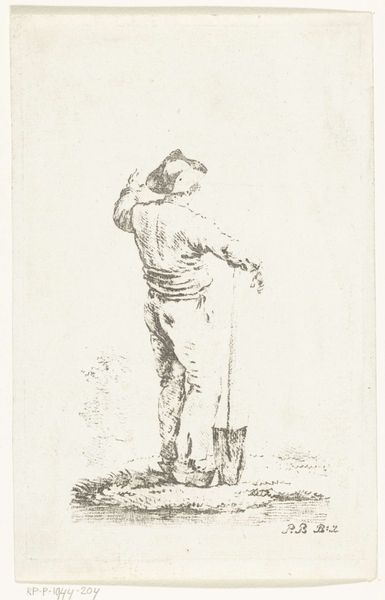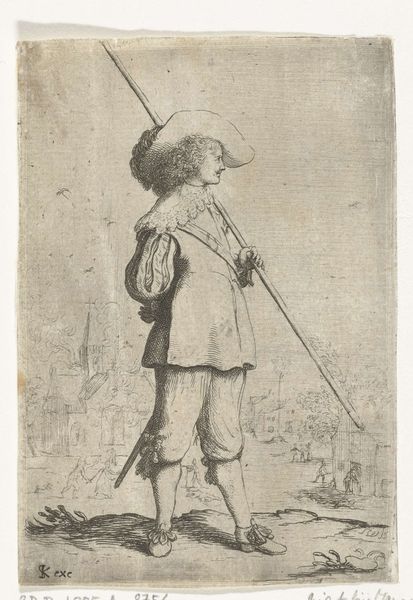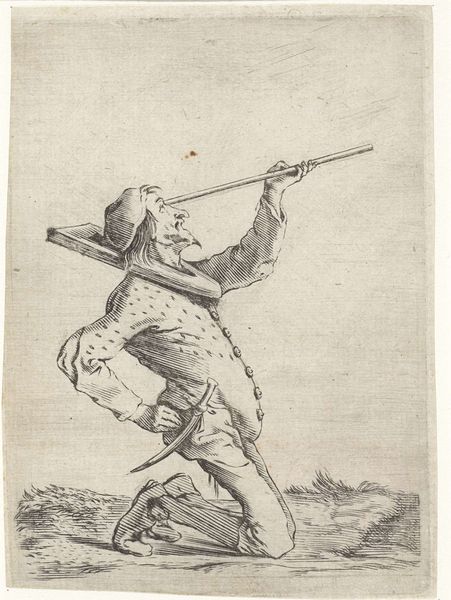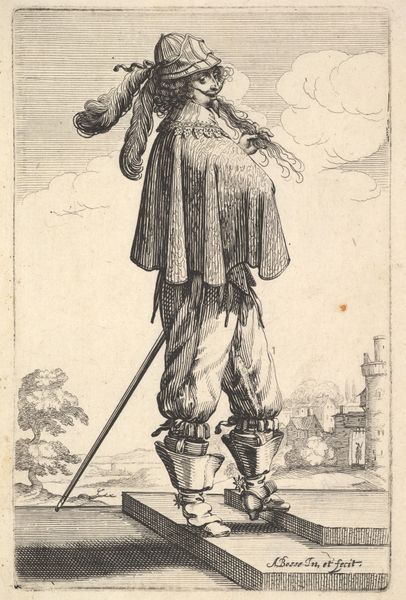
drawing, print, etching, paper, ink
#
portrait
#
drawing
#
baroque
# print
#
pen illustration
#
etching
#
landscape
#
figuration
#
paper
#
ink
#
pen-ink sketch
#
genre-painting
Dimensions: height 120 mm, width 80 mm
Copyright: Rijks Museum: Open Domain
Curator: Today we're looking at "Young Soldier," an etching made with pen and ink on paper, created after 1635 by Frederick Bloemaert, currently residing here at the Rijksmuseum. Editor: It's arresting, even now. There's a loneliness in that soldier’s posture, the way he’s looking out toward the horizon. He looks so young. Curator: The image is a fantastic example of Baroque portraiture and landscape as printmaking took hold. Bloemaert uses line work to achieve form and tone. Notice how the line weight describes his uniform's fabric and the shadows on the landscape. Editor: I’m curious about what this image might have communicated to its initial audience. Who was Bloemaert trying to reach and what was he saying? The tower makes me consider a protective but oppressive military power that sacrifices youthful innocence. The placement of his left hand on his hip feels subtly defiant against this backdrop. Curator: That reading fits within the period. Etchings like this circulated widely, and many found their way into print collections assembled by the rising middle class. It invited contemplation on the nature of duty and sacrifice within military expansion. Editor: It humanizes military personnel. Beyond strategy and conquest, war has a psychological toll. Here we see that through the bowed head and distant gaze. How did it shape the young people forced to participate in conflicts that benefited the ruling elite? Curator: Exactly. We see how Bloemaert situates him in the picture to provide an aesthetic reflection on these rising anxieties, contributing to a wider debate about warfare and individual experience. Editor: He’s not glamorized, not celebrated as a heroic figure, more of a witness, even a victim. It reframes the glorification that frequently happens during times of war. The small stature gives an idea of the subject's tender age. It’s both moving and thought-provoking. Curator: A fitting way to remember how art acts not just as historical document, but also as a space for complex, enduring, conversations. Editor: Precisely. Art invites us to think, to feel, and, hopefully, to act. To not repeat the stories or allow history to blind us.
Comments
No comments
Be the first to comment and join the conversation on the ultimate creative platform.
